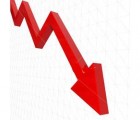Because raw materials such as polymer resins are petrochemical-based, they have been affected by fluctuating (and steadily-rising) world crude oil prices. Prices have increased significantly over the last 12 months – from below US$30 a barrel at the beginning of 2004 to averages now of around US$40 (and as high as US$50 late last year). Other pressures have come from a global supply/demand imbalance for base materials such as polyethylene. Some of the recent comments have included:
• The ‘Plastics News’ magazine noted US trade association head Don Duncan’s warning at the October K2004 plastics exhibition that high prices for natural gas and oil were driving up the cost of plastic raw materials to such an extent that it could create a long-term competitive disadvantage for U.S. plastics manufacturers.
• In a September ’04 media release, the UK Packaging and Industrial Films Association (PIFA) warned plastic film product buyers “… to expect significant price increases during September as producers and converters are forced to look for recovery of exceptional rising raw material costs. The news comes against a background of unprecedented instability in world oil supply and pricing.” The association had noted the competitive nature of the film/converting market had previously deterred producers from increasing prices (up to 27 per cent during 2004 for some polymers). However, producers’ margins were now decreasing to the point they risked business failure. PIFA issued another warning in November about the price increases and the tightening of raw material supplies.
• Peter De Hennin, group CEO of Australian flexible packaging printer and converter Finewrap, offered some insight into the ‘highly volatile, highly unpredictable nature of the current polymer pricing environment’ in the company’s November ’04 newsletter. According to De Henin, drivers influencing the prices of petrochemical-based plastics included: global instability (the Middle East crisis and terrorist-attack threats created a premium on feedstock prices); strong demand for base commodities in the growing Chinese economy; high oil prices; alternate uses of ethylene – a key component of polyethylene (ethylene producers are making more money selling to polystyrene producers and as demands for this product stay high, so will the price of polyethylene); and the variability of A$-US$ exchange rates (a 10-15 cent rate difference can impact 10-15 per cent up or down on raw material pricing alone).
It will be an issue worth watching as 2005 progresses.
Comment below to have your say on this story.
If you have a news story or tip-off, get in touch at editorial@sprinter.com.au.
Sign up to the Sprinter newsletter



